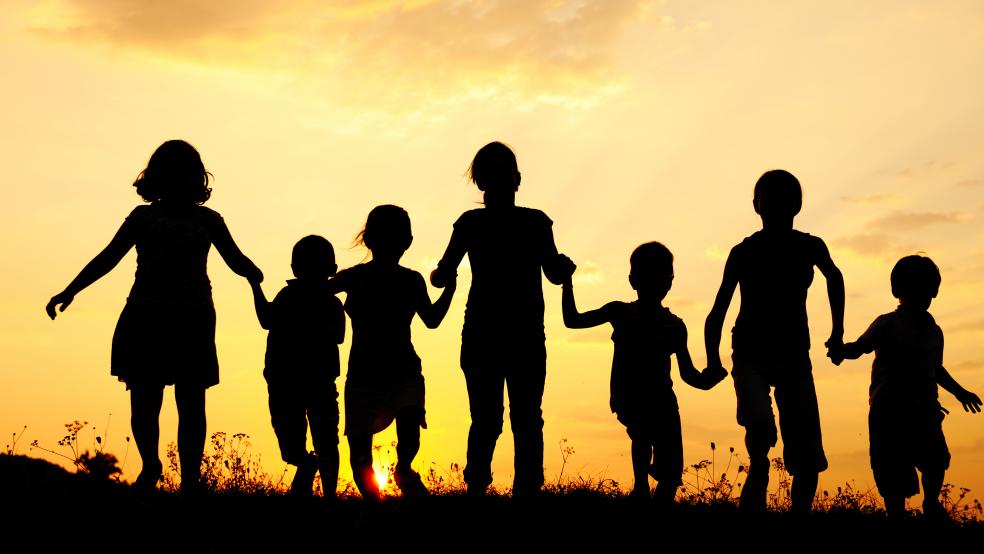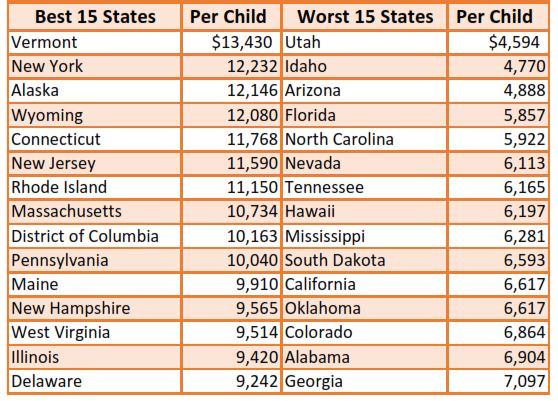It’s no secret that spending on public education, health care and social services has varied from state to state for years, depending on differences in their economies, tax structures, populations and commitment to quality services.
High-tax states like New York and New Jersey have regularly spent more on public education and social safety net programs for children than have poorer, low-tax states like Mississippi and Alabama.
Related: Why State Governors Will Determine the Future of US Health Care
But a new report by the Urban Institute released on Tuesday suggests that the disparity has grown far more pronounced, and that states in the Northeast have far surpassed the South and West in providing K through 12 public education for children as well as Medicaid, welfare assistance and other social safety net programs vital to their development.
Most public spending on children occurs at the state and local level. In 2013, state and local governments combined to spend on average about $7,900 per child for these services, compared to about $4,500 from federal sources.
Yet even when taking into account the often substantial differences in cost of living, the high-end states that spent $10,000 or more per child dominated the Northeast, while low-end states that spent $7,000 or less per child were located for the most part in southern and western regions.
For example, Vermont – the most generous of states -- spent $13,430 per child for education and social services in 2013, the most recent year for which comprehensive data is available. That was nearly three times more than the $4,590 per child expenditure in Utah, after adjusting for cost of living.
Related: The Growing Funding Gap for State Pensions Puts Millions at Risk
Twelve of the 15 states that provide the highest levels of grade school through high school educational support as well as health care and social services are located in the Northeast: Vermont, New York, Connecticut, New Jersey, Rhode Island, Massachusetts, the District of Columbia, Pennsylvania, Maine, New Hampshire, West Virginia and Delaware. Alaska, Wyoming and Illinois were the only high-end states located outside the Northeast.
At the same time, all 15 of the states providing the lowest levels of public education and health and social service support for children are in the South and West: Utah, Idaho, Arizona, Florida, North Carolina, Nevada, Tennessee, Hawaii, Mississippi, South Dakota, California, Oklahoma, Colorado, Alabama and Georgia.
The research targeted a multitude of programs that serve children, including local spending on K-12 education, state-earned income tax credits, state spending on Medicaid and 10 other social safety net programs that are jointly funded by federal and state governments.
The causes of the spending disparities are numerous and go well beyond the size of a state’s economy and population. Those could include political will and cultural values, demographics, and competing demands on state and local budgets for a finite amount of tax revenue.
Related: Nearly a Dozen States Are Suffering From ‘Chronic Budget Stress’
“There’s both the overall size of government, but there is also the question of how much you devote to education as opposed to roads and other functions,” said Julia Isaacs, a senior fellow at the Urban Institute and the lead author of the report.
Whatever the reasons, the impact of these disparities often have a profound impact on the education and public health outcomes of the government programs.
“Our review of the literature leads us to believe that yes, greater spending on schools, health systems, income supports, and social services does give children in states such as Alaska, New York, and Vermont a leg up over children in states that spend less, such as Idaho, Nevada, and Utah,” according to the report, although “the extent of the advantage is unclear.”
While “money matters,” the report added, other factors including economic and racial segregation of blacks, Latinos and American Indians can also adversely impact the outcomes of children’s educational and social development.
Related: States Keep Using Gimmicks to ‘Balance’ Their Budgets
Latino and American Indian or Alaska Native children are much more likely than non-Latino white and black children to live in low-spending states, the study found. About half of American Indian or Alaska Native children reside in states such as Arizona, Oklahoma, and South Dakota that spend less than $7,000 per child.
At the same time, 47 percent of Latino children live in low-spending states, especially California and Florida. By contrast, only 28 percent of non-Latino white children and 30 percent of black children live in states that spend less than $7,000 per child.
The report warns that population growth in low spending states could exacerbate the problem and lead to even lower per-child spending in the future. Population growth is expected in states like Florida and Texas while declining in New York and Ohio, where the per-child expenditures are much higher
“It is uncertain whether states that have traditionally spent relatively less per child will boost spending to keep up with population growth,” the report states. “If they do not, per-child spending will fall in many states, widening the gap between high- and low-spending states and heightening concerns about child outcomes in the latter.”






